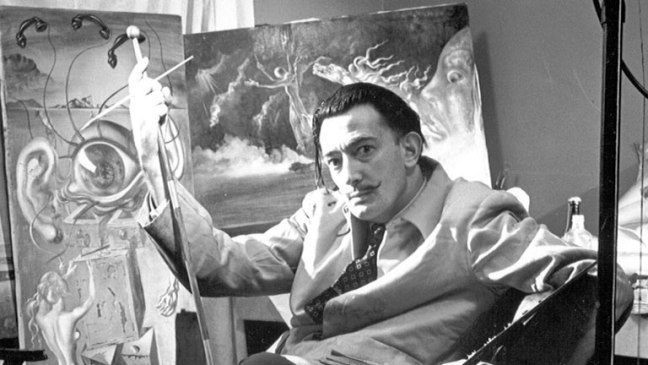 The success of art surely must depend on the recognition of the work, whether that’s the viewer knowing the artist from the piece in question or just by knowing the piece but not necessarily the artist who created it?
The success of art surely must depend on the recognition of the work, whether that’s the viewer knowing the artist from the piece in question or just by knowing the piece but not necessarily the artist who created it?
One person who perhaps falls into both categories is Salvador Domingo Felipe Jacinto Dalí i Domènech, Marquis of Dalí de Púbol, more commonly known by his professional moniker Salvador Dali.
Here was a man who courted much controversy in his long and flamboyant life, eccentricities notwithstanding. He loved excesses and complex relationships with his peers and his muses and his surrealist approach to life made him a figure as enigmatic as he was well-known, clearly a paradox that he himself would have no doubt enjoyed fueling.
But who he really was as a person, what his attitudes to society and of the public perception of him in many ways are reflected in his work. For some artists, to ask them to explain what their work means takes away the point of the work: the work speaks for them.
It is arguable that the majority of people are only really ever aware of Dali as being the artist ‘…who drew the melting clocks…’ even though they know his name, and that was about as far as my own knowledge went for a while.
The Persistence of Memory, the piece is called but if the opportunity to visit the Kelvingrove Art Gallery and Museum in Glasgow ever arose, you would see his classical painting Christ of St John of the Cross. Any religious leanings aside, it is the power of the imagery before you that quite simply can take your breath away. It is as far removed from ‘melted clocks’ that one could possibly get and demonstrates in those two pieces alone the diversity and talent of one of the world’s most unique and grandiose characters.
Born in 1904, he had an older sibling who died in infancy of gastroenteritis and was encouraged by his mother to focus on his artistic leanings. Dali’s father was a strict discplinarian whose approach to fatherhood for his only surviving son meant a somewhat repressed approach towards human interaction and intimacy.
It may have been this that actually fueled Dali’s surreal approach to his work and his life and we are, arguably, all the better for it, for we have benefited from Dali’s struggling childhood endeavours. The most familiar aspects of his output are, of course, his surrealist paintings and he used many somewhat conservative objects to express his idealogy. Take, for example, Ship with butterfly sails: it can communicate on many levels and can tell any number of stories to the viewer – but it is this approach that gives you the opportunity to examine the piece at length, taking the apparent normality of a tall ship but lacing it with a whole new meaning beyond the idea of searching for a new world.
Importantly, and this should be a requisite for all artists (in any medium), Dali had absolute faith in his own work, finding solace when negative aspects of his own personal life and that of the world around him were being blurred together by others.It was because if this commitment to his own work in the face of such adversity that he attracted the attentions of more conservative artists, one such person being Alfred Hitchcock. The film maker was searching for a way to visually express an element of mental instability and knew that Dali’s style would lend itself remarkably well to a dream sequence. And Dali did not disappoint: coupled with the hauntingly beautiful score by Miklós Rózsa, the imagery takes the 1945 production of Spellbound to terrific (and previously unreached) heights of film making.
Dali turned his flamboyant talents to fashion in the 1950s and was commissioned by Elsa Schiaparelli, the Italian designer. He approached photography with equal aplomb, using nature and still subjects as his muses.
In fact, his creativity was boundless, turning to sculpture, jewelry making and writing (the latter including his 1942 autobiography ‘The Secret Life of Salvador Dali’ and his only foray into fiction [although some had argued that his own life smacked of elements of the fantastical] with ‘Hidden Faces’, a story of aristocratic, decadent eccentrics).
His legacy lives on and, even nearly thirty years after his death, he still has the capacity to shock, amuse and inspire all manner of people, from film directors to musicians and beyond.
His is an injection of surrealism in a world struggling as perhaps it has always done
and always will do. If we ever need another Dali to bring escapism alive, then to that I say this: we already have our Dali and he will never be replaced.
Advertisements Share this:




